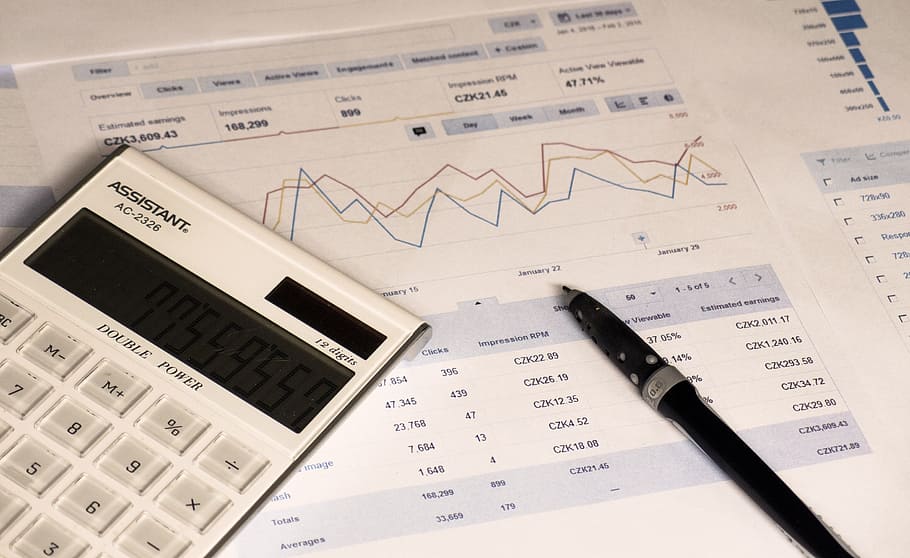Secured Loans: Financing Major Assets With Collateral

The profound desire to acquire significant, high-value assets—such as a family home, a commercial property, specialized heavy equipment, or a new vehicle—represents a monumental financial milestone for individuals and businesses alike. Rarely does the sheer capital cost of these assets permit a simple, immediate cash payment. This economic reality mandates accessing substantial external funding through structured debt instruments.
Secured Loans for Asset Acquisition represent the indispensable, specialized financial discipline dedicated entirely to providing this necessary, large-scale capital. These loans are fundamentally defined by the requirement that the borrower pledges a specific asset as collateral. This crucial security feature minimizes the financial risk to the lender. It translates directly into lower interest rates and more favorable borrowing terms for the borrower.
Understanding the core structural components, the rigorous qualification criteria, and the strategic imperative of leveraging collateral is absolutely non-negotiable. This knowledge is the key to unlocking low borrowing costs, accelerating asset accumulation, and securing long-term financial stability.
The Foundational Mechanics of Secured Lending
A secured loan is, by definition, a debt instrument where the borrower provides a specific, verifiable asset as collateralfor the loan principal. This asset is legally pledged to the lender. It can be seized and sold by the lender to recover the outstanding balance in the event of borrower default. This legal recourse significantly mitigates the lender’s risk exposure. The minimized risk allows the lender to offer interest rates (APR) that are substantially lower than those offered on high-cost, unsecured loans. The security of the asset makes the loan viable.
The two most common and largest forms of secured lending are mortgages (secured by real estate) and auto loans(secured by the vehicle). In both cases, the asset’s value dictates the maximum loan size. The asset serves as the primary guarantee of repayment. The lender’s financial position is protected by the asset’s liquidation value.
The core principle of this transaction is the Loan-to-Value (LTV) Ratio. This ratio compares the loan amount directly to the collateral’s current appraised market value. Lenders impose strict maximum LTV thresholds. This ensures that the collateral value provides a sufficient buffer against asset depreciation and potential default loss. A low LTV ratio signals a strong, safe investment.
Secured loans are universally characterized by fixed installment payments. The borrower receives a lump sum upfront. They repay the principal, plus interest, over a predetermined, fixed term. This stable repayment schedule provides predictability for the borrower’s long-term financial planning.
Mortgage and Real Estate Security

Mortgage lending is the largest and most complex sector of secured financing. The immense value and stability of real estate make it the premier form of loan collateral. Mortgages facilitate homeownership and commercial property acquisition globally. The asset’s permanence is a key security feature.
A. First Mortgage (Primary Lien)
The First Mortgage is the primary lien placed on the residential or commercial property. This loan covers the vast majority of the asset’s purchase price. In the event of foreclosure, the first mortgage lender has the primary legal right to the sale proceeds until their debt is fully retired. This superior legal position minimizes their lending risk. The first mortgage is the foundational secured debt.
B. Loan-to-Value (LTV) Ratio
The Loan-to-Value (LTV) Ratio is the critical risk metric. It is used to assess the safety of the mortgage. Lenders typically prefer LTVs of $80\%$ or less. This preference ensures the home’s value provides a minimum $20\%$ equity cushion. If the LTV exceeds $80\%$ (low down payment), the lender requires the borrower to purchase Private Mortgage Insurance (PMI). PMI protects the lender, not the borrower, against default loss.
C. Home Equity Loans and HELOCs
Home Equity Loans (HELs) and Home Equity Lines of Credit (HELOCs) are secured debt instruments. They are backed by the borrower’s accumulated equity in the home. These loans represent a second lien on the property. They provide lower interest rates than unsecured debt. However, they place the borrower’s primary residence at risk of foreclosure. Strategic use is mandatory to ensure the funds are used for value-adding purposes.
D. Commercial Mortgages
Commercial Mortgages finance income-producing assets (e.g., office buildings, apartment complexes). These loans are secured by the physical property. They are also underwritten based heavily on the property’s Net Operating Income (NOI). The property’s financial performance provides the primary means of debt service. These loans feature more complex terms, such as balloon payments, and require higher financial reserves from the investor.
Vehicle and Equipment Security

Secured lending is crucial for financing high-cost, non-real estate assets. These assets include vehicles, specialized machinery, and other capital equipment necessary for business operation. The asset’s liquid market value is the critical security determinant. Liquidation value protects the lender.
E. Auto Loans
Auto Loans are installment loans. They are secured by the specific vehicle being purchased. The lender holds a lien on the vehicle’s title. If the borrower defaults, the lender has the legal right to repossess and sell the car to recover the outstanding loan balance. The asset’s high rate of depreciation requires the loan term to be relatively short. Short terms minimize the risk of negative equity.
F. Equipment Loans
Equipment Loans finance the acquisition of specific business machinery, tools, or heavy construction equipment. The equipment itself serves as the collateral. This financing method is essential for capital-intensive industries. It allows businesses to acquire necessary productive assets without depleting their working capital reserves. The loan term is often structured to match the asset’s expected useful life.
G. Floor Plan Financing
Floor Plan Financing is a specialized, secured revolving line of credit. It is used by automotive dealers and heavy equipment retailers. The loan is secured by the dealer’s inventory (the cars on the lot). As a vehicle is sold, the dealer immediately repays the portion of the loan principal attributable to that specific unit. The inventory is the continuous collateral.
H. Securities-Backed Loans
Securities-Backed Loans are short-term loans. They are secured by the borrower’s publicly traded financial assets (stocks, bonds, mutual funds). The interest rate is typically very low. If the value of the pledged securities falls below a critical threshold, the lender issues a margin call. This non-negotiable demand requires the borrower to deposit additional collateral or face immediate liquidation of their assets.
Qualification, Rates, and Risk Mitigation
The rigorous qualification for a secured loan focuses on both the borrower’s credit profile and the verifiable value of the collateral. The loan’s ultimate cost is dictated by the level of risk the lender perceives. Mitigation strategies minimize the total borrowing expense.
I. Dual Qualification Criteria
Secured loans utilize dual qualification criteria. The lender assesses the borrower’s personal creditworthiness (credit score, DTI ratio). They also meticulously assess the collateral (appraisal, LTV ratio). A weakness in one area may be partially offset by strength in the other. For instance, strong collateral can mitigate a marginally lower credit score.
J. Lower Annual Percentage Rate (APR)
The security provided by the collateral allows the lender to assume significantly less risk. This reduction in risk translates directly into a substantially lower Annual Percentage Rate (APR) for the borrower compared to unsecured options. The low APR is the primary financial advantage of secured debt.
K. Risk of Foreclosure or Repossession
The non-negotiable risk for the borrower is the risk of foreclosure or repossession. Failure to meet the fixed repayment obligation grants the lender the legal right to seize the collateral asset. This high-stakes reality mandates rigorous repayment discipline. Secured debt should be prioritized for repayment above unsecured debt.
L. Appraisal and Valuation
A mandatory, independent appraisal or valuation of the collateral asset is required before the loan is issued. This valuation confirms the asset’s current market value. It determines the maximum permissible LTV. Accurate valuation protects the lender from over-lending against a depreciating or overvalued asset. The borrower typically pays for this appraisal.
Conclusion
Secured Loans are the essential mechanism for financing major asset acquisition with collateral.
The loan is fundamentally secured by the pledged asset, which minimizes lender risk and guarantees the borrower a substantially lower Annual Percentage Rate (APR).
Mortgage lending, secured by real estate, utilizes the Loan-to-Value (LTV) ratio as the key risk metric for determining loan size and required equity cushion.
Home Equity Loans (HELs) and HELOCs are vital second mortgages, leveraging accumulated property equity to access lower-cost capital for renovation.
Auto loans and equipment financing are secured by the asset’s liquidation value, with terms often matching the asset’s projected useful, depreciating lifespan.
The borrower must meet stringent dual qualification criteria, focusing on both personal creditworthiness and the collateral’s verifiable market valuation.
The primary risk for the borrower is the non-negotiable threat of foreclosure or repossession of the primary asset in the event of default on the repayment obligation.
The low APR of secured debt provides a massive financial advantage, accelerating asset accumulation and minimizing the total lifetime cost of borrowing capital.
Strategic use of these instruments is mandatory for financing high-cost, value-retaining assets that act as reliable collateral for the lending institution.
Mastering the LTV ratio and appraisal process is key to maximizing borrowing capacity while maintaining a necessary equity cushion in the collateral asset.
Secured lending stands as the final, authoritative guarantor of stability and accessibility for major personal and commercial capital requirements.
The disciplined repayment of this debt is the ultimate key to building robust credit health and long-term financial prosperity.
